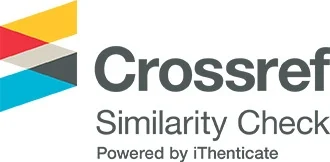Assessment of prescription pattern and prescription errors at primary healthcare centres in Alkhoms city, northwestern of Libya
DOI:
https://doi.org/10.65137/lmj.v10i2.284Keywords:
Prescription patterns; pharmacists; Prescription errors; Primary healthcare, Libya; WHO prescribing indicatorsAbstract
Background: The medical prescription is a handwritten or electronic computerised legal document. It must include all the required information, and adhere to the prescription writing guidelines, to be considered valid. In Libya, many of the previous studies reported the majority of prescriptions are handwritten and contain medication errors arise due to the high missing for legal or procedural requirements in the medical prescriptions by the majority of physicians. Consequently, the present study is designed to help in understanding the medical prescription practices and errors, which will lead to developing the healthcare system in Libya.
Objectives: The aim of this study was to evaluate the prescription patterns and prescription errors in outpatient prescriptions issued by physicians working in primary healthcare centres at the Alkhoms city, northwestern of Libya.
Methods: A comprehensive analytical study was carried out to evaluate the outpatient prescriptions patterns and errors. A total of 405 outpatient prescriptions issued by physicians and specialist working in various primary healthcare centres in the Alkhoms city and its suburbs in northwestern of Libya, were collected from several pharmacies and assessed. The study was lasted three months and used the random sampling method.
Results: A total number of 405 prescriptions contains on 1852 drugs were reviewed in this study. The percentage of handwritten prescriptions and computer typed prescriptions were (98.51%) and (1.48%), respectively. The average number of drugs per prescription was 4.57. Most of the physicians prescribed drugs using their brand names (96.06%). The name of the patient was not mentioned on 5.19% of the prescriptions., whereas, the prescriber' name did not found on (80.25%) of the total prescriptions. The outcomes of the present study also displayed that the information related to the patient was usually available, in contrast, some important information related to the drugs was ignored in most of the prescriptions including the route of drug administration (71.12%). A half of the examined prescriptions was approximately lacked to information about the diagnosis (48.40%), and (29.62%) of the prescriptions lacked to the date of the prescription.
Conclusions: The present study shows a low level of commitment with World Health Organization (WHO) guidelines related to prescribing indicators, and high prescription errors. Moreover, according to the finding of this study, we recommend to introduce the use of electronic prescriptions throughout the healthcare system in Libya. This will lead to update the prescription form to include all the elements recommended by the WHO in the prescription guidelines.
Downloads
Published
Issue
Section
License
Copyright (c) 2025 Lebda Medical Journal

This work is licensed under a Creative Commons Attribution-NoDerivatives 4.0 International License.








